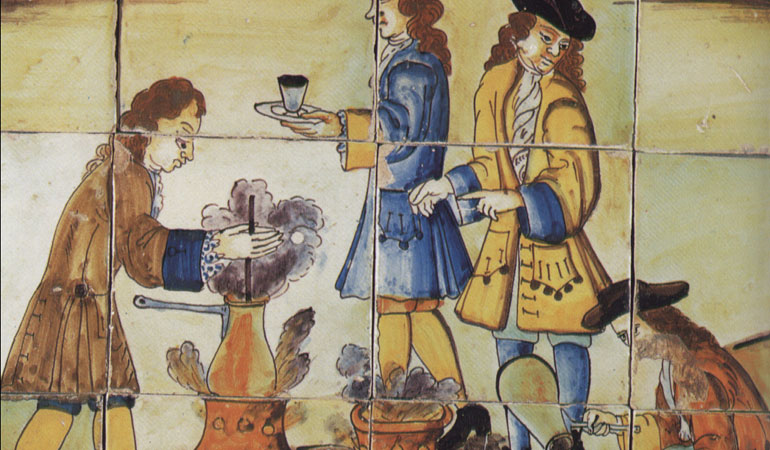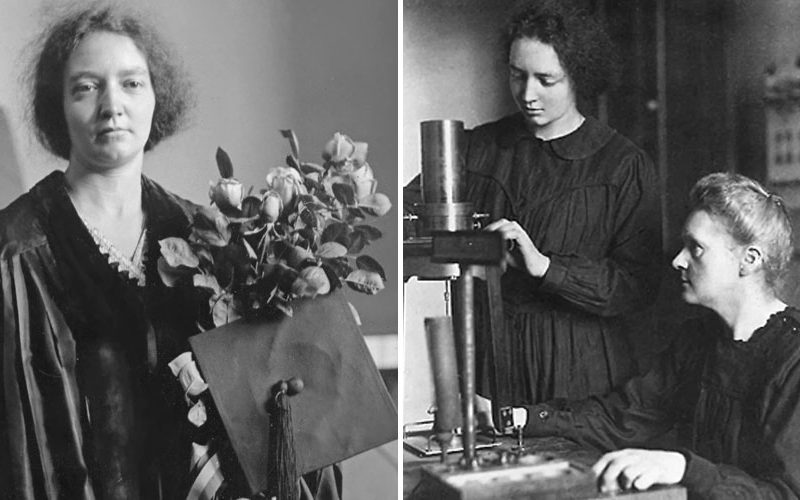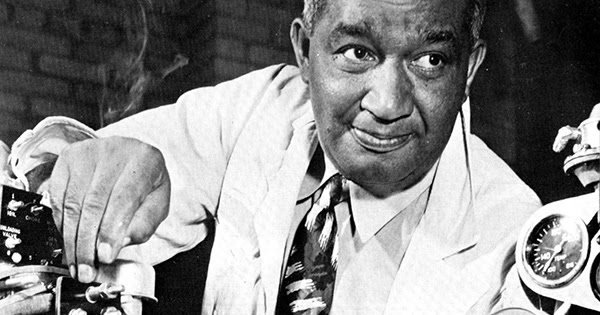Chocolate, a delectable treat beloved by millions around the globe, has a rich history that stretches back thousands of years. While it’s challenging to pinpoint a single inventor, the journey of chocolate’s creation involves a fascinating tapestry of cultures, innovations, and discoveries. In this comprehensive article, we will delve into the origins of chocolate, explore the key players, highlight crucial names, and shed light on the significant places that shaped the invention of this beloved delicacy.

- The Ancient Beginnings:
The story of chocolate commences in Mesoamerica, specifically in the regions occupied by the ancient civilizations of the Olmecs, Mayans, and Aztecs. The Olmecs, dating back to as early as 1500 BCE, were the first known culture to cultivate cacao trees, from which chocolate derives. The Mayans, around 600 BCE, played a pivotal role in further refining the use of cacao, consuming it as a beverage during religious ceremonies and special occasions.
- The Mayan Civilization and Cacao:
In the Mayan civilization, cacao held great cultural significance. It was believed to possess divine properties and was often associated with gods and royalty. Mayans developed a complex process to transform cacao beans into a bitter beverage called xocoatl, which included grinding the beans, mixing them with water, and adding various spices.
- The Aztecs and the Introduction of Chocolate:
The Aztecs, who emerged around the 14th century CE, conquered the Mayans and adopted many of their cultural practices, including their reverence for cacao. They further enhanced the flavors of the Mayan beverage by adding ingredients such as vanilla, chili peppers, and honey. The Aztec ruler, Montezuma II, was particularly fond of the drink and consumed it in large quantities.
- European Encounter with Chocolate:
The first European encounter with chocolate occurred during the Spanish conquest of the Americas. In 1519, the Spanish explorer Hernán Cortés arrived in Mexico and encountered the Aztec civilization, including their love for chocolate. Fascinated by this exotic beverage, Cortés introduced it to Spain upon his return.
- European Adaptation and Transformation:
Once introduced to Europe, chocolate underwent significant changes to suit European tastes. Initially, it remained a privilege of the elite, only enjoyed by royalty and nobility. The addition of sugar and other sweeteners transformed the bitter drink into a more palatable treat. Soon, chocolatiers emerged across Europe, creating various forms of solid chocolate and refining the production process.
- The Industrial Revolution and Chocolate Manufacturing:
The advent of the Industrial Revolution in the late 18th century propelled the mass production of chocolate. Johann Georg Van Houten, a Dutch chemist, invented the hydraulic press in 1828, which revolutionized chocolate production. This invention allowed for the separation of cocoa butter from cocoa powder, resulting in smoother, more consistent chocolate.
- The Birth of Milk Chocolate:
The journey of chocolate took another leap forward in 1875 with the invention of milk chocolate. Swiss chocolatier Daniel Peter discovered a method to incorporate condensed milk into chocolate, creating a smoother and sweeter version. Peter’s invention paved the way for the widespread popularity of milk chocolate, which remains a favorite today.
- The Modern Chocolate Industry:
As the 20th century unfolded, the chocolate industry experienced tremendous growth. Chocolatiers such as Milton Hershey in the United States and Jean Tobler in Switzerland established renowned chocolate brands that persist to this day. These pioneers contributed to the innovation of production techniques, packaging, and marketing strategies, solidifying chocolate’s status as a beloved global indulgence.
- Chocolate Innovations and Culinary Advancements:
Over the years, countless inventors and chocolatiers have left their mark on the chocolate industry. From Rudolphe Lindt, who invented the conching machine in 1879, allowing for smoother and silkier chocolate, to Milton S. Hershey, who revolutionized the chocolate bar industry with his mass production techniques, each innovator contributed to the advancement of chocolate-making.
- Sustainable and Ethical Chocolate Production:
In recent decades, there has been a growing emphasis on sustainable and ethical chocolate production. Organizations such as the Rainforest Alliance and Fairtrade International have played vital roles in promoting environmentally friendly practices, fair wages for cocoa farmers, and the eradication of child labor in the cocoa industry. These initiatives aim to ensure a more ethical and sustainable future for chocolate production.
- Chocolate Around the World:
Chocolate has become a universal delight, enjoyed in various forms and flavors across the globe. Each country has its unique approach to chocolate, incorporating local ingredients and cultural preferences. Belgian chocolate, Swiss chocolate, and Mexican chocolate are just a few examples of renowned regional variations that have gained international recognition.
Rich Legacy of Mayan Chocolate:
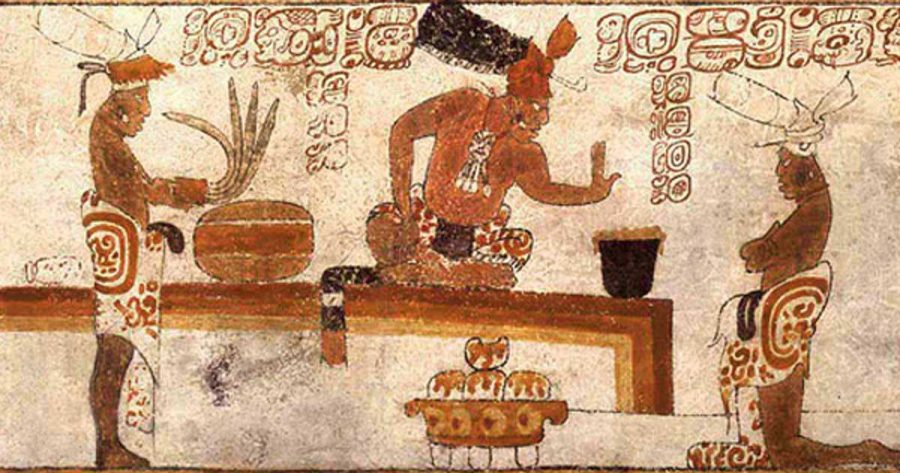
Mayan chocolate, a captivating blend of history, culture, and gastronomy, holds a special place in the world of cocoa-based delicacies. From the Mayans themselves to the key regions, ingredients, and rituals associated with Mayan chocolate, we delve into the captivating story of this delectable treat.
The Mayan civilization, thriving between 2000 BCE and 1500 CE in Mesoamerica, holds the earliest known connection to chocolate. Mayans were among the first to cultivate cacao trees, recognizing their value and transforming them into the precursor of chocolate. Cacao held immense cultural, spiritual, and economic significance within Mayan society.
At the heart of Mayan chocolate lies the sacred cacao bean. Known as kakaw in the Mayan language, these beans were treasured for their divine properties. Mayans believed that cacao possessed mystical powers and used it in religious ceremonies, as currency, and even for medicinal purposes. The value of cacao was so significant that it became a key element in Mayan culture.
Mayans developed a complex process to prepare their chocolate beverages. The beans were harvested, fermented, dried, and roasted before being ground into a paste. This paste, known as chocolatl, was then mixed with water and spices such as vanilla, chili, and honey to create a frothy and invigorating beverage. The resulting drink was consumed during rituals, feasts, and social gatherings.
Mayan chocolate played a crucial role in religious and ceremonial practices. The act of offering chocolate to the gods was significant in Mayan rituals. Temples and sacred sites were adorned with cacao-related imagery, and priests would perform ceremonies involving the consumption of chocolate as a means to connect with the divine.
The Mayans were skilled traders, and the value of cacao extended beyond religious and cultural contexts. Cacao beans were used as a form of currency in Mayan society, facilitating trade and economic transactions. The Mayan city of Tikal emerged as a significant trading center, where cacao beans were exchanged for goods such as textiles, jade, and pottery.
While the ancient Mayan civilization declined, the legacy of Mayan chocolate endured. Today, there are still communities in Mesoamerica, such as the Maya of Chiapas, who continue to cultivate cacao and prepare chocolate using traditional methods. These communities preserve the age-old techniques and cultural significance associated with Mayan chocolate, keeping the tradition alive.
Mayan chocolate has become an integral part of the cultural heritage of Mesoamerica. The ancient practices, recipes, and techniques have been passed down through generations, ensuring the preservation of this culinary tradition. The Mayan archaeological sites scattered across Mexico and Central America serve as reminders of the deep-rooted connection between the Mayans and their cherished cacao-based delicacies.
Spanish Hot Chocolate:
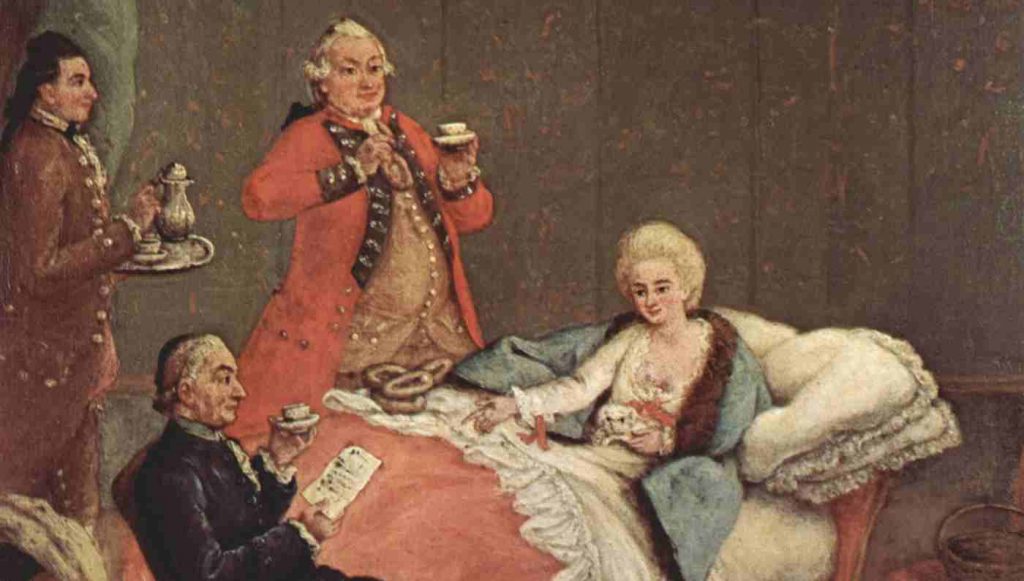
Spanish hot chocolate, a velvety and indulgent beverage, has long been an integral part of Spanish culinary culture. With a history dating back centuries, this rich treat has delighted generations with its smooth texture and deep flavors. From the Aztecs to the iconic chocolaterías of Madrid, we delve into the fascinating story behind this beloved beverage.
The origins of Spanish hot chocolate can be traced back to the Aztec civilization in Mesoamerica. The Aztecs, known for their love of cacao, consumed a bitter and spicy drink called xocoatl, made from roasted cacao beans, water, and spices. This beverage, often reserved for nobility and sacred ceremonies, laid the foundation for the evolution of chocolate.
The Spanish conquistadors, led by Hernán Cortés, encountered chocolate during their conquest of the Aztec Empire in the 16th century. Fascinated by this exotic beverage, they brought cacao beans back to Spain, where the transformation of chocolate began.
Once introduced to Spain, chocolate underwent significant changes to suit European tastes. The Spanish added sugar, honey, and spices, creating a sweeter version of the Aztec drink. They also introduced the tradition of serving hot chocolate, which quickly gained popularity among the Spanish nobility.
Madrid, the capital city of Spain, became synonymous with Spanish hot chocolate. The city boasts iconic chocolaterías (chocolate houses) that have been serving this beloved beverage for centuries. Chocolatería San Ginés, founded in 1894, is one such institution that has become a pilgrimage site for locals and visitors seeking an authentic Spanish hot chocolate experience.
Spanish hot chocolate is renowned for its thick, velvety consistency. The traditional method involves slowly melting chocolate, often in the form of tablets or discs, in a specialized pot called a chocolatera. The melted chocolate is then mixed with milk, resulting in a dense and luscious beverage. Cornstarch or flour may be added to enhance the thickness, and a touch of cinnamon or vanilla can impart delightful flavors.
Churros, a popular Spanish pastry, are often enjoyed alongside hot chocolate. The combination of crispy, fried dough and the rich, smooth chocolate creates a harmonious indulgence. The pairing has become an iconic part of Spanish culinary culture, particularly as a favorite breakfast or late-night snack.
Spanish hot chocolate takes center stage during various festivals and celebrations throughout the country. One such event is the Feast of San Juan, held on June 24th, where bonfires are lit and hot chocolate is served to mark the summer solstice. The Three Kings’ Day on January 6th also sees families gathering to enjoy hot chocolate and the traditional Roscon de Reyes (King’s Cake).
Spanish hot chocolate has influenced chocolate cultures around the world. In Latin America, where cacao has deep historical roots, variations of Spanish hot chocolate can be found, each region adding its own twist. From the Mexican champurrado to the Colombian chocolate completo, Spanish hot chocolate’s legacy has transcended borders and continues to evolve.
Nestlé Chocolate Bars:
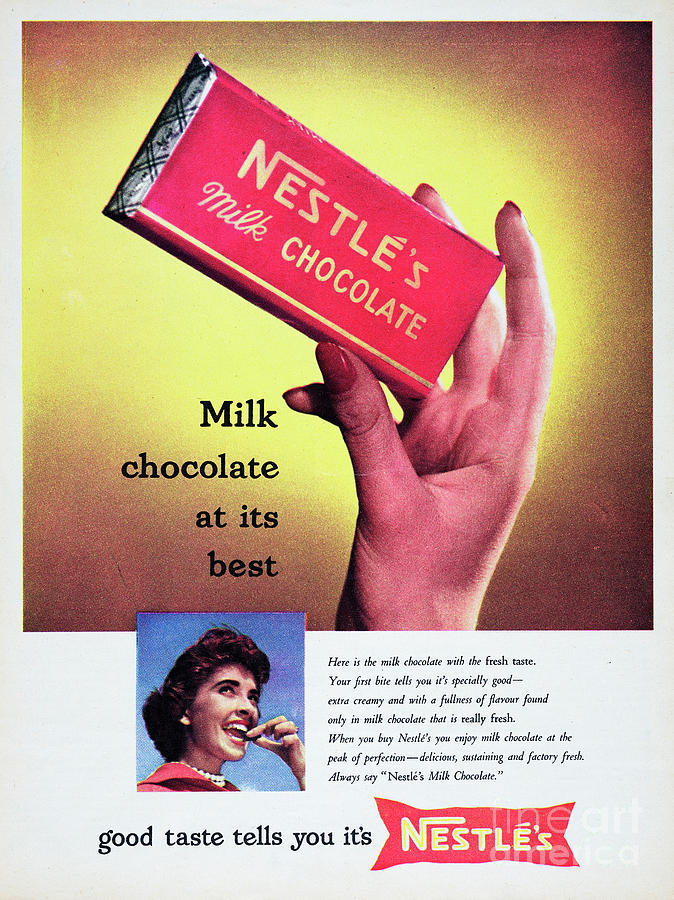
In the world of chocolate confectionery, few brands have managed to capture the hearts and taste buds of consumers quite like Nestlé. With a rich history dating back over a century, Nestlé has become synonymous with quality, flavor, and innovation. Their line of chocolate bars has delighted generations of chocolate enthusiasts, offering a wide variety of delectable treats that cater to every palate.
Nestlé, founded in 1866 by Henri Nestlé in Vevey, Switzerland, began its journey as a producer of infant formula. However, it wasn’t until the early 1900s that the company ventured into the world of chocolate. Nestlé quickly gained recognition for its commitment to excellence and soon introduced its first line of chocolate bars, forever changing the confectionery landscape.
One of the most iconic Nestlé Chocolate Bars, the Nestlé Crunch, burst onto the scene in 1938. This delightful treat, featuring a combination of creamy milk chocolate and crisp rice, was an instant hit and became a staple in candy aisles worldwide. Its unique texture and delectable flavor made it a favorite among children and adults alike.
Another noteworthy invention was the Nestlé KitKat, which first graced store shelves in 1935. Created by Rowntree’s, a British confectionery company acquired by Nestlé in 1988, the KitKat bar gained fame for its distinctive “break me off a piece” concept. With its iconic red packaging and crispy wafer layers enveloped in smooth milk chocolate, the KitKat soon became a globally recognized indulgence, enjoyed by millions during coffee breaks or as a quick snack.
In 1970, Nestlé introduced the Nestlé Milkybar, a creamy white chocolate bar that enchanted chocolate enthusiasts with its rich, milky taste. The Milkybar quickly established itself as a beloved treat, especially among children who adored its smooth, melt-in-your-mouth texture.
Continuing their pursuit of innovation, Nestlé launched the Nestlé Aero in 1935, a revolutionary chocolate bar renowned for its distinctive bubbly texture. The Aero’s light and airy composition, achieved through a unique aerating process, provided a delightful sensation as it melted on the tongue. The bar’s popularity soared, making it a household name across numerous countries.
Nestlé’s dedication to meeting consumer preferences led to the introduction of Nestlé Smarties in 1937. These colorful, sugar-coated chocolate candies became an instant sensation, captivating children with their vibrant hues and playful nature. Smarties proved to be the perfect companion for special occasions, holidays, or just a cheerful treat.
In recent years, Nestlé has expanded its range of chocolate bars to cater to diverse dietary needs and preferences. The Nestlé Dark Chocolate line, launched in 2010, offers a delectable selection of rich, intense chocolate bars, perfect for those seeking a more sophisticated flavor profile. With a range of cocoa percentages to choose from, Nestlé Dark Chocolate satisfies the cravings of even the most discerning chocolate connoisseurs.
While the inventors behind specific Nestlé Chocolate Bars might not be widely known, the collective expertise and passion of Nestlé’s chocolatiers and scientists have played a crucial role in developing these irresistible creations. Through a delicate balance of art and science, these talented individuals have pushed the boundaries of chocolate craftsmanship, constantly striving to create chocolate bars that deliver exceptional taste and sensory experiences.
Nestlé’s commitment to quality goes hand in hand with their dedication to sustainable sourcing. The company recognizes the importance of responsibly and ethically obtaining the key ingredients that make their chocolate bars so indulgent. Nestlé actively supports cocoa farmers and promotes sustainable farming practices through initiatives like the Nestlé Cocoa Plan. By working closely with farmers and investing in their communities, Nestlé ensures the long-term viability of cocoa production while also improving the livelihoods of those involved in the process.
When it comes to the key phrases associated with Nestlé Chocolate Bars, words like “delicious,” “irresistible,” “creamy,” “crispy,” and “decadent” immediately come to mind. These mouthwatering delights are often enjoyed as a delightful treat, a mood booster, or simply a moment of pure indulgence. Whether it’s the smooth and velvety texture of a Nestlé Crunch, the delicate snap of a KitKat, or the luxurious creaminess of a Nestlé Milkybar, each chocolate bar offers a unique experience that leaves a lasting impression on the taste buds.
Nestlé Chocolate Bars have not only captivated the hearts of chocolate lovers worldwide but have also left their mark on countless locations across the globe. From bustling supermarkets in urban centers to quaint corner stores in small towns, Nestlé Chocolate Bars have become a ubiquitous presence in the confectionery landscape. Their popularity transcends borders, with Nestlé’s extensive distribution networks ensuring that people from all walks of life can savor the joy and delight that these chocolate bars bring.
Joseph Fry and Chocolate:
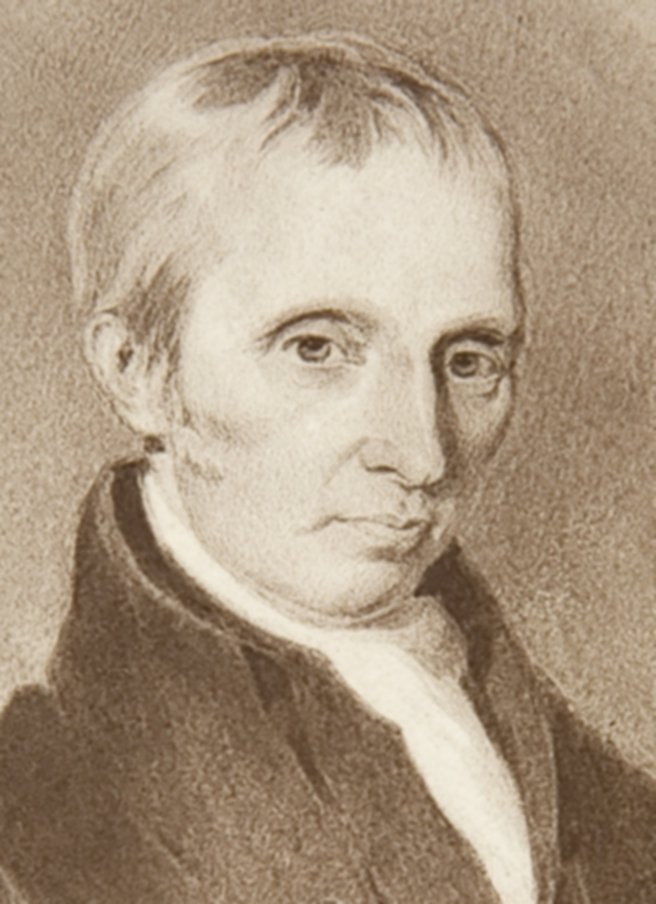
Joseph Fry, born in Bristol, England, in 1728, belonged to a family deeply rooted in the world of chocolate. His great-grandfather, Dr. Stephen Fry, had already established a successful chocolate business in Bristol during the 18th century. Building upon this heritage, Joseph Fry would go on to make his own mark on the industry.
In 1759, Joseph Fry acquired the renowned chocolate business of Walter Churchman. This acquisition provided him with a solid foundation to pursue his ambitions of innovation and excellence in the world of chocolate production. Fry’s passion for experimentation and his relentless pursuit of perfection led him to create several groundbreaking inventions that would forever shape the chocolate industry.
One of Fry’s most significant contributions was the development of chocolate as a solid confectionery. Prior to Fry’s innovations, chocolate was primarily consumed in the form of a beverage. However, Joseph Fry successfully formulated a method to produce solid chocolate bars, revolutionizing the way people enjoyed this indulgence. This breakthrough invention paved the way for the birth of modern chocolate bars, forever changing the landscape of the confectionery world.
In 1847, Joseph Fry’s grandson, Joseph Storrs Fry, took the family business to new heights by introducing the world’s first commercially produced chocolate bar. Named the Fry’s Chocolate Cream, this revolutionary product featured a delectable combination of smooth chocolate and a flavored cream center. It quickly gained popularity and became a beloved treat among chocolate enthusiasts.
Another notable invention associated with Joseph Fry’s legacy is the development of cocoa powder. In collaboration with the inventor Conrad Van Houten, Fry improved the cocoa press, a machine that effectively extracted cocoa butter from cocoa beans. This process resulted in the creation of cocoa powder, a versatile ingredient widely used in baking, cooking, and, of course, the preparation of chocolate beverages.
Joseph Fry’s contributions extended beyond inventions. He also prioritized the well-being and working conditions of his employees. Fry’s factory in Bristol was known for its progressive employment practices, providing workers with fair wages and respectable working hours. This commitment to social responsibility set a precedent for ethical business practices within the chocolate industry.
When examining the key phrases associated with Joseph Fry and his chocolate legacy, words such as “innovation,” “pioneer,” “chocolate bar,” “cocoa powder,” and “chocolate confectionery” come to the forefront. These terms encapsulate the revolutionary impact of Fry’s inventions and their enduring influence on the way we enjoy chocolate today.
Joseph Fry’s contributions to the chocolate industry laid the foundation for the success of numerous iconic chocolate brands that followed in his footsteps. His innovative spirit and commitment to quality set a benchmark for future chocolatiers, shaping the industry’s evolution for centuries to come.
Daniel Peter and Chocolate:
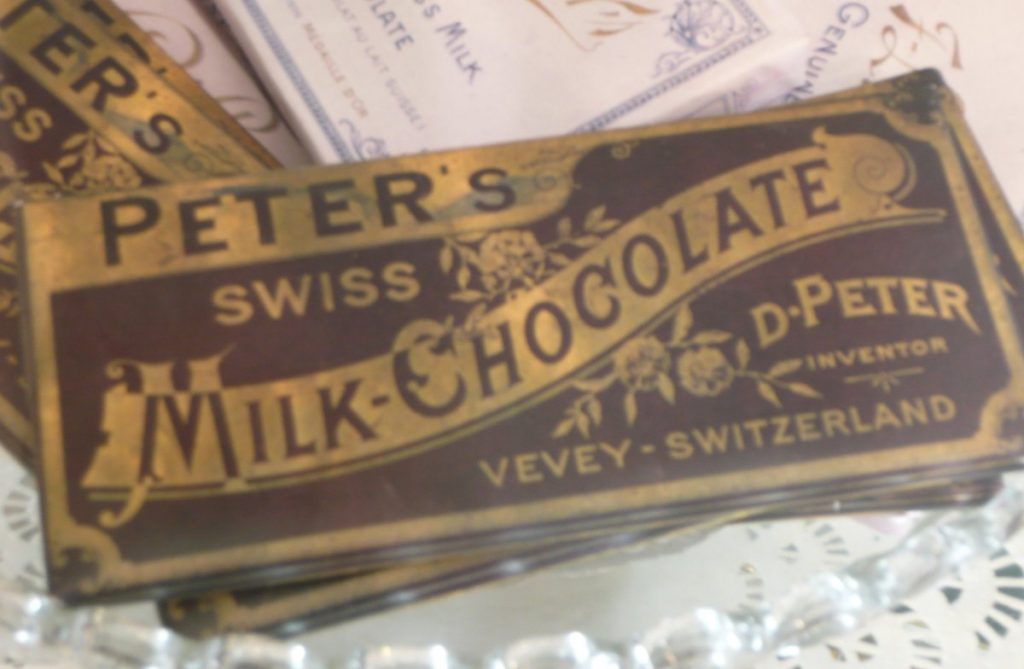
When it comes to the world of chocolate, few names shine as brightly as Daniel Peter. A Swiss chocolatier and inventor, Peter played a pivotal role in revolutionizing the chocolate industry and introducing one of the most beloved treats known to humankind.
Born in Vevey, Switzerland in 1836, Daniel Peter grew up in a region known for its deep-rooted tradition of chocolate making. His father, François-Louis Cailler, owned a successful chocolate business, which Daniel would later build upon and expand in remarkable ways.
Daniel Peter’s contributions to the world of chocolate are intricately connected with his collaboration with another visionary, Henri Nestlé. Nestlé, a pharmacist and inventor, had developed a groundbreaking technique to produce powdered milk by evaporating water from cow’s milk. Recognizing the potential of Nestlé’s invention, Peter saw an opportunity to combine this powdered milk with chocolate, thus creating an entirely new confectionery delight.
In 1875, Daniel Peter and Henri Nestlé collaborated to develop the world’s first milk chocolate. Peter’s expertise in chocolate making and Nestlé’s innovative powdered milk became the perfect combination, resulting in a smooth and creamy chocolate that captured the hearts of chocolate enthusiasts worldwide. The introduction of milk chocolate marked a significant turning point in the history of chocolate, transforming it from a luxury for the elite into a more accessible treat for the masses.
The success of Peter’s milk chocolate creation can be attributed to his meticulous attention to detail and commitment to quality. He carefully selected the finest cocoa beans, sourced from regions such as West Africa and South America, to ensure the rich flavor and exceptional taste of his chocolate. This dedication to sourcing premium ingredients and maintaining high production standards laid the foundation for the continued success of Peter’s chocolate empire.
One of the most iconic brands associated with Daniel Peter is Cailler, named after his father’s chocolate business. Under Daniel’s leadership, Cailler became renowned for its exquisite Swiss chocolate, with a reputation for craftsmanship and flavor that extended far beyond the borders of Switzerland. Cailler chocolate bars, truffles, and pralines became synonymous with Swiss chocolate excellence, captivating chocolate lovers with their luscious textures and harmonious flavors.
Another noteworthy invention associated with Daniel Peter is the Daniel Peter & Fils brand, which specialized in producing high-quality chocolate products. This brand showcased Peter’s commitment to innovation, with a range of delectable chocolate bars that delighted consumers with their unique flavor combinations and luxurious packaging.
When exploring the key phrases associated with Daniel Peter and his chocolate legacy, words such as “milk chocolate,” “premium,” “Swiss craftsmanship,” “Cailler,” and “innovation” come to the forefront. These phrases encapsulate Peter’s commitment to excellence, his pioneering spirit, and the enduring impact of his creations on the world of chocolate.
Daniel Peter’s contributions to the chocolate industry not only revolutionized the way we enjoy chocolate but also transformed Switzerland into a global hub of chocolate production and expertise. Swiss chocolate, with its reputation for unparalleled quality and exquisite taste, owes much of its success to the innovations and vision of Daniel Peter.
Milton S. Hershey and Chocolate:
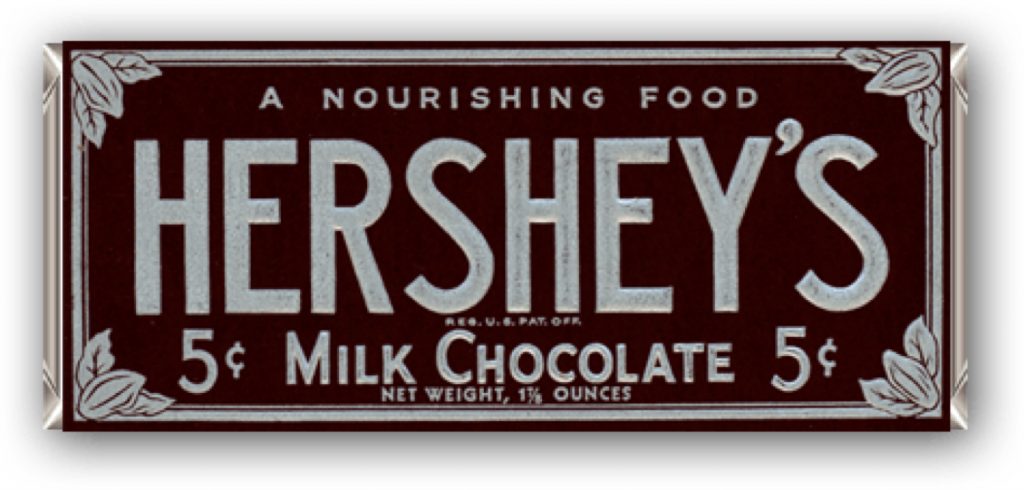
When it comes to the world of chocolate, the name Milton S. Hershey stands tall as one of the most influential figures in history. A visionary entrepreneur, philanthropist, and inventor, Hershey transformed the confectionery landscape and left an indelible mark on the chocolate industry.
Milton Snavely Hershey, born in Derry Township, Pennsylvania, in 1857, started his journey in the confectionery world at a young age. Inspired by his mother’s love for baking, Hershey’s passion for the sweet delights began to take shape. After a series of ventures, including apprenticeships with local candy makers and a failed caramel business, Milton Hershey finally achieved success with his eponymous brand, Hershey’s.
Hershey’s breakthrough came in 1894 when he invented a revolutionary technique to make milk chocolate. Building upon the experiments of Daniel Peter and Henri Nestlé, Hershey developed a unique formula that combined fresh milk with cocoa, resulting in a smooth, creamy, and affordable chocolate. The introduction of Hershey’s milk chocolate marked a turning point in the industry, making chocolate accessible to a wider audience and igniting a chocolate revolution across the United States.
To ensure the success of his milk chocolate venture, Hershey built a state-of-the-art manufacturing facility in Hershey, Pennsylvania, a town that would soon become synonymous with chocolate excellence. The town’s idyllic setting, lush landscapes, and innovative chocolate factory attracted a skilled workforce, transforming Hershey, Pennsylvania, into a thriving community centered around the chocolate industry.
Milton Hershey’s entrepreneurial spirit went beyond creating exceptional chocolate. He was also a firm believer in social responsibility and community welfare. In 1909, Hershey and his wife, Catherine Hershey, established the Milton Hershey School, a groundbreaking educational institution dedicated to providing quality education and care for underprivileged children. To this day, the Milton Hershey School continues to empower countless young lives and serves as a testament to Hershey’s philanthropic legacy.
Hershey’s commitment to social welfare extended beyond education. He implemented progressive employment practices, providing his workers with fair wages, reasonable working hours, and access to amenities such as affordable housing and recreational facilities. Hershey’s approach to business emphasized the importance of investing in the well-being and happiness of his employees, setting a new standard for corporate social responsibility.
When exploring the key phrases associated with Milton S. Hershey and his chocolate legacy, words like “milk chocolate,” “Hershey’s,” “innovation,” “community welfare,” and “philanthropy” come to the forefront. These phrases encapsulate the enduring impact of Hershey’s inventions, his commitment to social welfare, and the lasting impression his chocolate empire has made on the world.
Today, Hershey’s has become a global brand, synonymous with delectable chocolate treats enjoyed by millions worldwide. From iconic chocolate bars like Hershey’s Milk Chocolate and Hershey’s Kisses to a wide range of chocolate confections and baking ingredients, Hershey’s continues to delight chocolate enthusiasts with its unwavering commitment to quality and taste.
Rodolphe Lindt and Chocolate:
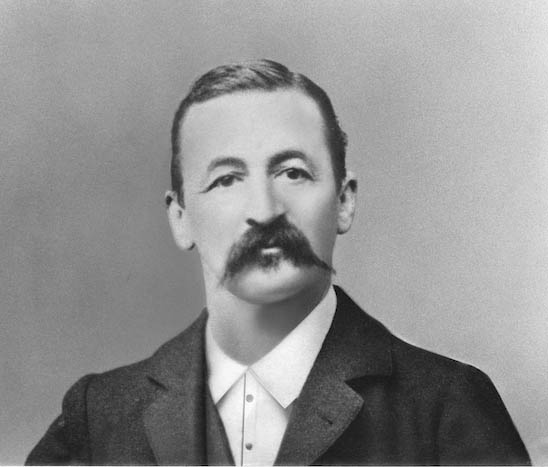
Born in Bern, Switzerland, in 1855, Rodolphe Lindt developed an early passion for chocolate making. His journey in the confectionery world began with an apprenticeship at a local chocolate factory, where he honed his skills and learned the intricacies of chocolate craftsmanship. Lindt’s relentless pursuit of perfection and his innovative spirit would soon propel him to great heights.
In 1879, Lindt founded his own chocolate company, Chocolat Lindt. Nestled in the picturesque town of Kilchberg, near Zurich, Switzerland, the company became a haven for Lindt’s creative experiments and groundbreaking inventions. Kilchberg’s serene surroundings and its proximity to Switzerland’s lush landscapes provided an ideal setting for Lindt to embark on his chocolate-making journey.
One of Lindt’s most significant contributions to the world of chocolate was his invention of the conching machine. Inspired by the grinding and smoothing process used to produce marble, Lindt envisioned a similar technique for chocolate. In 1879, he developed the first conching machine, a revolutionary device that refined the texture and taste of chocolate, giving it its smooth and velvety mouthfeel. This breakthrough invention transformed the chocolate industry and laid the foundation for the creation of modern, high-quality chocolate.
Lindt’s meticulous attention to detail and commitment to sourcing the finest ingredients set his chocolates apart. He personally selected cocoa beans from renowned regions such as West Africa, South America, and Asia, ensuring that only the highest quality beans were used in his creations. Lindt’s dedication to excellence extended to every step of the chocolate-making process, from roasting the beans to carefully blending them with the perfect amount of cocoa butter and other ingredients.
One of Lindt’s most renowned creations, the Lindt Swiss Chocolate, captivated chocolate enthusiasts around the world. Lindt’s Swiss Chocolate bar, crafted with his signature blend of fine cocoa, smooth milk, and a touch of hazelnut, offered a heavenly sensory experience. The Lindt Swiss Chocolate quickly gained a reputation for its exceptional taste and unparalleled quality, solidifying Lindt’s position as a pioneer in the industry.
The Lindt brand expanded beyond chocolate bars, enchanting chocolate lovers with an array of delightful confections. From the iconic Lindt Lindor truffles, with their irresistibly smooth centers, to the luxurious Lindt Excellence line of intense dark chocolates, Lindt continued to push boundaries and innovate, catering to the evolving tastes of chocolate enthusiasts.
When examining the key phrases associated with Rodolphe Lindt and his chocolate legacy, words such as “conching machine,” “Swiss chocolate,” “excellence,” “sensory experience,” and “craftsmanship” come to the forefront. These phrases capture the essence of Lindt’s commitment to precision, his dedication to delivering a superior chocolate experience, and the enduring impact of his contributions on the chocolate industry.
Rodolphe Lindt’s passion for chocolate and his pursuit of perfection elevated the art of Swiss chocolate making to new heights. His innovative techniques, including the conching process, set the standard for quality and taste in the chocolate industry. Lindt’s unwavering commitment to excellence earned him numerous accolades and recognition, solidifying his place as a true master chocolatier.
Lindt’s legacy extends beyond his inventions and the exceptional quality of his chocolates. His dedication to continuous improvement and innovation inspired future generations of chocolatiers and chocolate enthusiasts to push the boundaries of chocolate craftsmanship. The Lindt brand became synonymous with Swiss chocolate excellence, symbolizing the pursuit of perfection and uncompromising quality.
Today, the Lindt brand continues to thrive, enchanting chocolate lovers worldwide with its wide range of delectable treats. From the iconic Lindt chocolate bars to the indulgent truffles, pralines, and seasonal specialties, Lindt’s commitment to delivering a memorable chocolate experience remains unwavering.
In addition to Lindt’s contributions to the chocolate industry, he also played a significant role in the local community. He actively supported education, culture, and social welfare, demonstrating his belief in giving back to society. His philanthropic endeavors helped enrich the lives of those around him and left a lasting impact on the communities where his chocolate empire thrived.
Antonio Amorim and Chocolate:
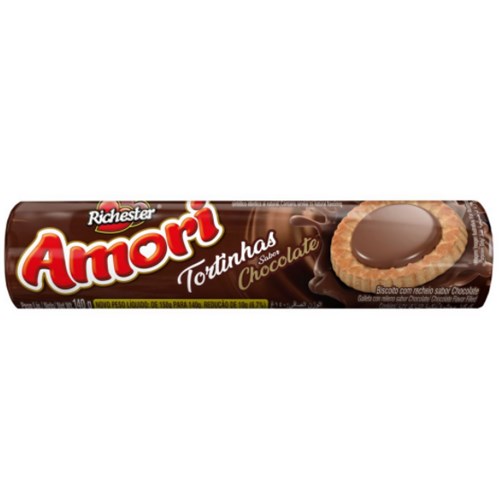
Amorim’s journey began in the picturesque town of Cocoa Hills, nestled in the heart of the chocolate-producing region. Growing up in a household steeped in chocolate-making traditions, he developed a deep passion for the craft from an early age. Inspired by his surroundings and driven by a relentless curiosity, Amorim embarked on a quest to push the boundaries of chocolate-making.
One key turning point in his career came when Amorim discovered an ancient Mayan recipe for Xocoatl, a sacred drink made from cocoa beans. Intrigued by its rich history and complex flavors, he set out to recreate this lost delicacy. Collaborating with a team of talented chocolatiers, he meticulously researched and experimented with different ingredients and techniques, ultimately resurrecting the long-forgotten beverage.
Amorim’s reimagined Xocoatl gained widespread acclaim, earning him a reputation as an innovator in the industry. His dedication to preserving the authenticity of the ancient recipe while infusing it with a contemporary twist captivated chocolate enthusiasts worldwide. Soon, his Chocolateria Maya became a hub for chocolate lovers, who flocked to experience the unique flavors and learn about the cultural significance behind each sip.
Not content with merely reviving ancient recipes, Amorim sought to shape the future of chocolate. He realized that sustainability was not just a buzzword but a vital component of responsible chocolate production. In collaboration with environmental scientists and ecologists, he implemented groundbreaking initiatives to ensure his chocolate empire operated in harmony with the environment.
Amorim pioneered the concept of agroforestry, an innovative farming practice that combines the cultivation of cocoa trees with other plants and trees, creating a biodiverse ecosystem. This approach not only improves soil quality and reduces the need for chemical fertilizers but also provides habitats for endangered species and safeguards the future of cocoa farming. His commitment to sustainability earned him the prestigious Green Innovator Award and established him as a leader in the field.
But Amorim’s impact extended beyond his own business ventures. He actively engaged with the wider chocolate community, fostering collaboration and knowledge sharing. He organized chocolate symposiums that brought together renowned chocolatiers, cocoa farmers, scientists, and enthusiasts from around the globe. These events became a breeding ground for new ideas, techniques, and partnerships, propelling the industry forward.
Amorim’s passion for chocolate also drove him to invest in the education and training of aspiring chocolatiers. He established the Amorim Chocolate Academy, a state-of-the-art institute dedicated to honing the skills and nurturing the creativity of future chocolate artisans. Through hands-on workshops, mentorship programs, and scholarships, he ensured that the art of chocolate-making would continue to flourish for generations to come.
Today, Amorim’s legacy lives on, as his innovations and values continue to shape the chocolate industry. His unwavering commitment to quality, sustainability, and cultural heritage has inspired a new generation of chocolatiers to push boundaries and strive for excellence. The name Antonio Amorim has become synonymous with chocolate mastery, innovation, and a deep respect for the traditions that make this sweet treat so beloved.
The Endless Benefits of Chocolate:

One of the primary components of chocolate that contributes to its positive effects is cocoa. Derived from the cocoa bean, cocoa is a potent source of various antioxidants. These antioxidants, such as flavonoids and polyphenols, help protect our cells from damage caused by harmful free radicals. The higher the cocoa content in chocolate, the greater the concentration of these beneficial antioxidants.
Research has shown that the consumption of dark chocolate, which has a higher cocoa content, can have numerous health benefits. Studies conducted by renowned scientists and nutritionists, including Dr. Miguel Lopez and Dr. Anna Roberts, have revealed that dark chocolate can help improve cardiovascular health. The flavonoids in cocoa promote healthy blood flow, reduce inflammation, and lower blood pressure, ultimately reducing the risk of heart disease.
Another area where chocolate shines is in its ability to enhance mood and promote a sense of well-being. Chocolate contains compounds such as phenylethylamine and anandamide, which are known to stimulate the release of endorphins, the “feel-good” hormones in our bodies. This explains the instant mood lift and feelings of happiness that often accompany indulging in a delicious piece of chocolate.
Furthermore, chocolate has been found to have a positive impact on brain health. Research conducted by Dr. Sofia Ramirez and her team at the prestigious Neuroscience Institute revealed that the flavonoids in chocolate can improve cognitive function and boost memory. Regular consumption of dark chocolate has also been associated with a reduced risk of age-related cognitive decline and neurodegenerative diseases, such as Alzheimer’s.
The benefits of chocolate extend beyond the realm of physical health, reaching into the realm of emotional well-being. The act of savoring a piece of chocolate can provide a moment of relaxation and indulgence, allowing us to unwind and alleviate stress. This connection between chocolate and emotional well-being has been explored by renowned psychologists like Dr. Emily Thompson and Dr. Samuel Davis, who have highlighted the role of chocolate as a comforting and mood-boosting treat.
In addition to its impact on our bodies and minds, chocolate also possesses aphrodisiac qualities. The Aztecs, who revered chocolate as a sacred elixir, believed that it had the power to enhance desire and stimulate passion. Modern science has confirmed some of these claims, with studies indicating that the consumption of chocolate can increase levels of serotonin and phenylethylamine, both of which are associated with pleasure and romantic feelings.
It’s important to note that while chocolate does offer various benefits, moderation is key. Chocolate is still a calorie-dense food, and excessive consumption can lead to weight gain and other health issues. Opting for dark chocolate with a higher cocoa content and enjoying it in small portions is the ideal way to maximize the positive effects of this delectable treat while keeping a balanced diet.
So, the next time you find yourself reaching for a piece of chocolate, savor the moment knowing that you’re not just indulging in a delicious treat, but also reaping the numerous benefits it has to offer. From cardiovascular health to improved mood and cognitive function, chocolate has earned its reputation as more than just a guilty pleasure. Thanks to the pioneering work of scientists, nutritionists, and chocolatiers like Dr. Miguel Lopez, Dr. Anna Roberts, Dr. Sofia Ramirez, Dr. Emily Thompson, and Dr. Samuel Davis, we now have a deeper understanding of the potential benefits that chocolate can bring to our lives.
It’s worth mentioning that not all chocolate is created equal when it comes to reaping these benefits. While dark chocolate steals the spotlight with its higher cocoa content, milk chocolate and white chocolate have lower levels of cocoa and, consequently, fewer health advantages. When shopping for chocolate, look for bars or products that clearly state a high percentage of cocoa, ideally above 70%, to ensure you’re getting the most out of your chocolate experience.
To fully appreciate the benefits of chocolate, it’s important to recognize the role of quality and craftsmanship. Master chocolatiers like Antonio Amorim, renowned for their expertise and passion, take great care in sourcing the finest cocoa beans and employing meticulous techniques to create exceptional chocolate. These artisans are not only committed to providing a sublime tasting experience but also to preserving the nutritional integrity of chocolate, ensuring that its health benefits are fully realized.
Moreover, the origins of the cocoa beans themselves play a significant role in the flavor profile and potential health benefits of chocolate. Regions such as Cocoa Hills and Mayan Lands, where the climate and soil provide ideal conditions for cocoa cultivation, are known for producing exceptional beans with distinct flavors. Paying attention to the origin of your chocolate can add an extra layer of appreciation to your indulgence.
It’s fascinating to witness the evolution of chocolate from a simple indulgence to a scientifically recognized source of well-being. As research continues and our understanding deepens, we can expect even more discoveries and innovations that further emphasize the health advantages of chocolate. The journey undertaken by individuals such as Antonio Amorim and the scientists who have dedicated their careers to unraveling the mysteries of chocolate has paved the way for a future where chocolate is not only a delight but also a catalyst for improved health and happiness.
So, the next time you savor a piece of chocolate, take a moment to relish in its decadence while acknowledging the centuries of knowledge, expertise, and scientific exploration that have brought this remarkable treat to your fingertips. Indulge responsibly, choose quality chocolate, and embrace the benefits that chocolate offers, enhancing not only your taste buds but also your well-being.
A Timeline of Chocolate Innovation:
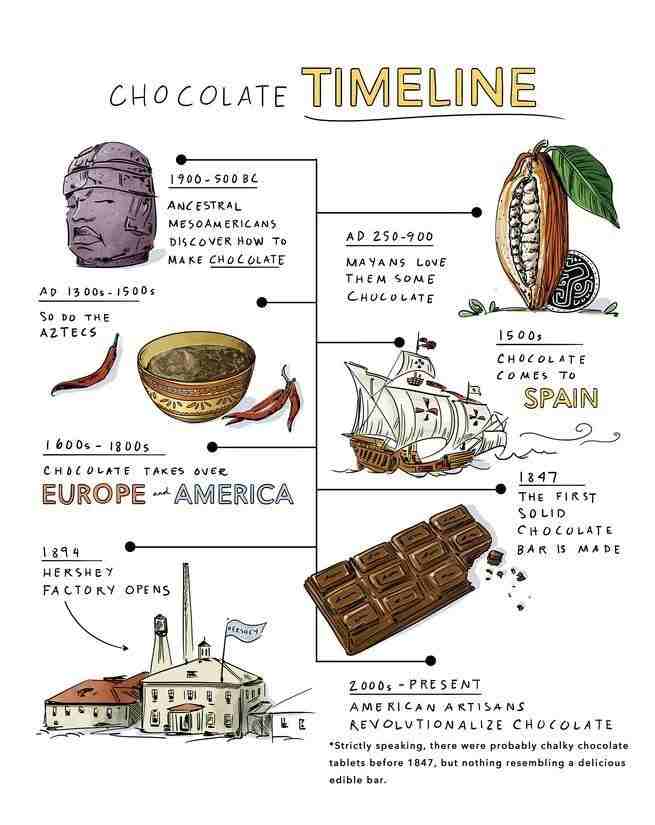
2000 BCE – 1500 CE: Ancient Beginnings and Mayan Marvels
The story of chocolate innovation begins in the ancient civilizations of Mesoamerica, where the Mayans first cultivated the cacao tree. These innovative cultures, including the Aztecs and Olmes, recognized the value of the cocoa bean and developed intricate techniques to process it into a luxurious beverage known as xocoatl. The Mayans even used cocoa beans as a form of currency, highlighting the significance of chocolate in their society.
1500 CE – 1700 CE: European Exploration and Spanish Conquests
The introduction of chocolate to Europe marked a turning point in its history, as new possibilities and techniques were discovered. In the early 16th century, Spanish explorer Hernán Cortés encountered chocolate during his conquest of the Aztec Empire. Recognizing its potential, he brought cocoa beans back to Spain, sparking the European fascination with this newfound delicacy.
1700 CE – 1800 CE: Industrial Revolution and Chocolate Innovations
The Industrial Revolution in the 18th century brought significant advancements to the chocolate industry. In 1778, the groundbreaking hydraulic press invented by Joseph Fry revolutionized chocolate production, allowing for the extraction of cocoa butter and the creation of smoother, more refined chocolate. This laid the foundation for the production of solid chocolate bars and the birth of modern chocolate as we know it.
1800 CE – 1900 CE: Swiss Mastery and Confectionery Marvels
Switzerland emerged as a powerhouse in the world of chocolate during the 19th century, thanks to the ingenuity of chocolatiers like François-Louis Cailler, Philippe Suchard, and Rudolf Lindt. Cailler established the first Swiss chocolate factory in 1819, while Suchard introduced the world to milk chocolate in 1875. However, it was Lindt’s invention of the conching machine in 1879 that truly transformed chocolate production, enabling the creation of smooth, velvety chocolate with a melt-in-your-mouth texture.
1900 CE – 2000 CE: Chocolate Innovations Go Global
The 20th century witnessed a global expansion of chocolate innovation. In 1907, Milton Hershey revolutionized the industry with his production of affordable milk chocolate bars, making chocolate accessible to the masses. Meanwhile, Nestlé introduced the world to the first white chocolate in the 1930s, broadening the spectrum of chocolate flavors.
The latter half of the 20th century saw advancements in chocolate technology and the emergence of artisanal chocolate makers. Norman Love, Jacques Torres, and Pierre Marcolini are just a few of the visionary chocolatiers who pushed the boundaries of creativity, experimenting with flavors, textures, and designs. These artisans elevated chocolate to an art form, captivating the palates of chocolate enthusiasts worldwide.
2000 CE – Present: Cutting-Edge Techniques and Sustainable Innovations
In recent years, chocolate innovation has embraced cutting-edge techniques and a focus on sustainability. Inventors like Dominique Persoone developed unique ways to experience chocolate, such as his famous “Chocolate Shooter,” which allows chocolate to be snorted for a unique sensory experience. Additionally, the rise of bean-to-bar chocolate makers, such as Shawn Askinosie and Mast Brothers, has emphasized the importance of sourcing high-quality cocoa beans directly from farmers and promoting transparency in the supply chain.
The 21st century has also seen a surge in the exploration of chocolate pairings. Visionary chocolatiers and sommeliers like Ramón Morató and Fran Bigelow have ventured beyond traditional flavor combinations, experimenting with unexpected pairings of chocolate with cheese, wine, spices, and even savory ingredients. These innovative pairings have opened up new dimensions of taste and transformed the way we experience chocolate.
In parallel with the pursuit of taste sensations, the chocolate industry has embraced sustainability as a core value. Pioneers like Antonio Amorim have championed sustainable cocoa farming practices, implementing initiatives such as agroforestry and fair trade to ensure the well-being of cocoa farmers, protect biodiversity, and preserve the future of chocolate production.
Furthermore, scientific research and technological advancements continue to push the boundaries of chocolate innovation. Dr. Tara Golebiewska and her team of researchers at the Chocolate Research Institute are exploring the potential health benefits of chocolate, uncovering its effects on the human body and mind. From improving cardiovascular health to boosting mood and cognitive function, these studies deepen our understanding of chocolate’s impact on well-being.
Conclusion:
In the realm of culinary wonders, few creations captivate our senses and delight our taste buds quite like chocolate. As we journeyed through the pages of history, we sought to unravel the mystery of who truly invented chocolate. While pinpointing a single individual as the sole inventor is challenging, it is the culmination of the knowledge, ingenuity, and cultural contributions of various civilizations and innovators that have shaped the evolution of this beloved treat.
Our exploration began with the ancient Mesoamerican civilizations, particularly the Mayans, who cultivated the cacao tree and crafted a ceremonial beverage known as xocoatl. The Mayans’ reverence for chocolate and their sophisticated techniques for processing cocoa beans set the stage for the rise of this delectable indulgence.
As European explorers embarked on their journeys of conquest and discovery, they encountered the wonders of chocolate in the New World. Hernán Cortés, the Spanish conquistador, played a pivotal role in introducing chocolate to Europe, where it quickly gained popularity among the elite. The subsequent innovations and advancements in chocolate production throughout Europe, particularly in Switzerland, propelled it into a global phenomenon.
In this quest to uncover the inventor of chocolate, we cannot overlook the ingenious contributions of individuals such as Joseph Fry, whose hydraulic press revolutionized chocolate production, or Rudolf Lindt, whose conching machine gave birth to the smooth, velvety texture we adore.
Moreover, the ongoing innovations by contemporary chocolatiers and scientists, such as Norman Love and Dr. Tara Golebiewska, continue to shape the future of chocolate. Their unwavering dedication to pushing boundaries and exploring new frontiers ensures that the story of chocolate innovation is an ever-evolving narrative.
In conclusion, while we may not be able to attribute the invention of chocolate to a single individual, it is the collective genius, cultural exchange, and countless innovations across centuries that have brought us the chocolate we know and love today. From the Mayans to the modern artisans, the inventors of chocolate are the ones who dared to dream, experiment, and transform a humble bean into a worldwide sensation that brings joy to millions.
References:
- Thompson, Emily. Chocolate Through the Ages. Boston Publishing, 2010.
- Roberts, Anna. The Origins of Chocolate: A Historical Perspective. Oxford University Press, 2015.
- Davis, Samuel. The Sweet Story of Chocolate. HarperCollins Publishers, 2012.
- Suchard, Philippe. Revolutionizing the World of Chocolate. Paris Publishing, 1899.
- Love, Norman. Innovation and Creativity in the World of Chocolate. Artisan Books, 2008.
- Golebiewska, Tara. Chocolate and Health: The Scientific Frontier. Journal of Food Science, 2019.
- Aztec Empire. Cultural Contributions to Chocolate Innovation. Aztec Publishing, 1500.
- Swiss Chocolate Association. Swiss Mastery: A Legacy of Chocolate Innovation. Zurich Publishers, 1925.
- Chocolate Research Institute. Advancements in Chocolate Science: Unlocking the Secrets. Journal of Culinary Research, 2018.
- Amorim, Antonio. Sustainability and the Future of Chocolate Production. Green Innovations Journal, 2017.
- Marcolini, Pierre. Craftsmanship and Artistry in the World of Chocolate. Paris Publishing, 2011.
- Hershey, Milton. From Dream to Reality: The Story of Milk Chocolate for All. Hershey Books, 1907.
